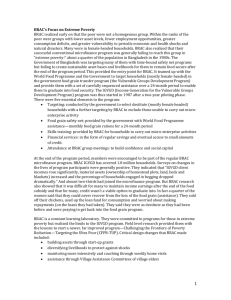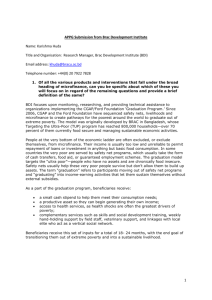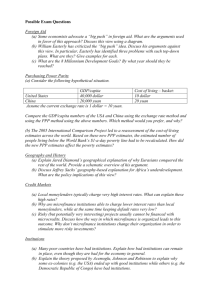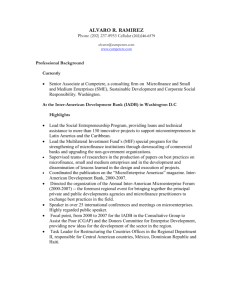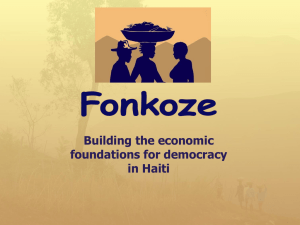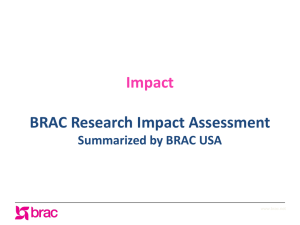Bangladesh: Scaling Up a Program for the Poorest—BRAC's IGVGD
advertisement
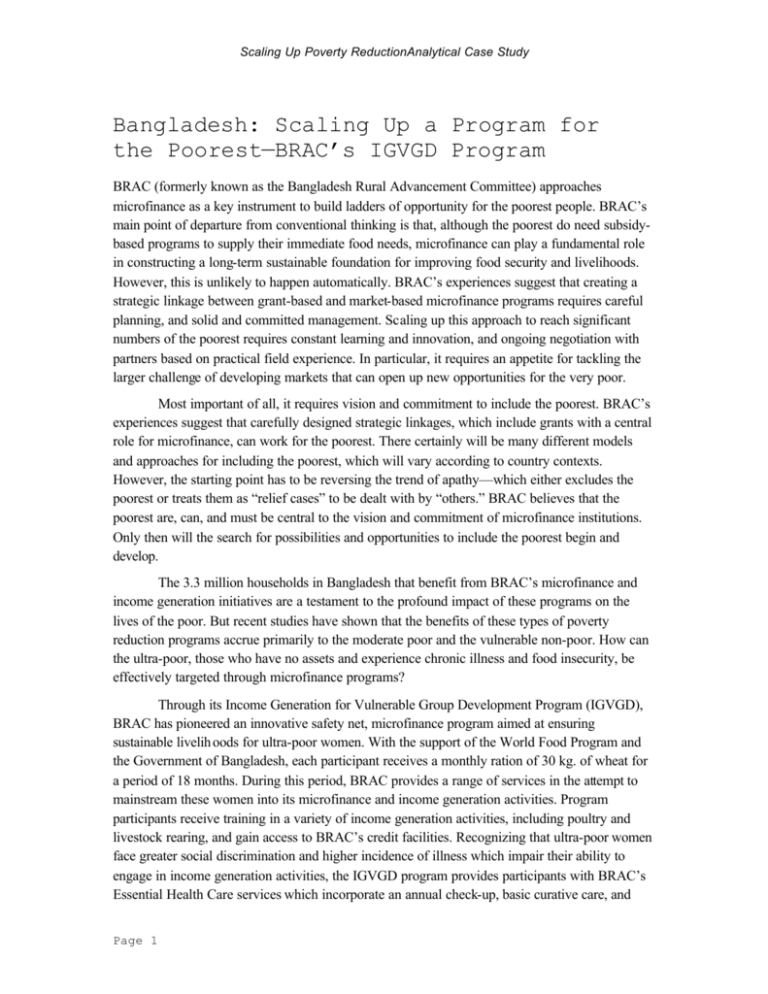
Scaling Up Poverty ReductionAnalytical Case Study Bangladesh: Scaling Up a Program for the Poorest—BRAC’s IGVGD Program BRAC (formerly known as the Bangladesh Rural Advancement Committee) approaches microfinance as a key instrument to build ladders of opportunity for the poorest people. BRAC’s main point of departure from conventional thinking is that, although the poorest do need subsidybased programs to supply their immediate food needs, microfinance can play a fundamental role in constructing a long-term sustainable foundation for improving food security and livelihoods. However, this is unlikely to happen automatically. BRAC’s experiences suggest that creating a strategic linkage between grant-based and market-based microfinance programs requires careful planning, and solid and committed management. Scaling up this approach to reach significant numbers of the poorest requires constant learning and innovation, and ongoing negotiation with partners based on practical field experience. In particular, it requires an appetite for tackling the larger challenge of developing markets that can open up new opportunities for the very poor. Most important of all, it requires vision and commitment to include the poorest. BRAC’s experiences suggest that carefully designed strategic linkages, which include grants with a central role for microfinance, can work for the poorest. There certainly will be many different models and approaches for including the poorest, which will vary according to country contexts. However, the starting point has to be reversing the trend of apathy—which either excludes the poorest or treats them as “relief cases” to be dealt with by “others.” BRAC believes that the poorest are, can, and must be central to the vision and commitment of microfinance institutions. Only then will the search for possibilities and opportunities to include the poorest begin and develop. The 3.3 million households in Bangladesh that benefit from BRAC’s microfinance and income generation initiatives are a testament to the profound impact of these programs on the lives of the poor. But recent studies have shown that the benefits of these types of poverty reduction programs accrue primarily to the moderate poor and the vulnerable non-poor. How can the ultra-poor, those who have no assets and experience chronic illness and food insecurity, be effectively targeted through microfinance programs? Through its Income Generation for Vulnerable Group Development Program (IGVGD), BRAC has pioneered an innovative safety net, microfinance program aimed at ensuring sustainable livelih oods for ultra-poor women. With the support of the World Food Program and the Government of Bangladesh, each participant receives a monthly ration of 30 kg. of wheat for a period of 18 months. During this period, BRAC provides a range of services in the attempt to mainstream these women into its microfinance and income generation activities. Program participants receive training in a variety of income generation activities, including poultry and livestock rearing, and gain access to BRAC’s credit facilities. Recognizing that ultra-poor women face greater social discrimination and higher incidence of illness which impair their ability to engage in income generation activities, the IGVGD program provides participants with BRAC’s Essential Health Care services which incorporate an annual check-up, basic curative care, and Page 1 Scaling Up Poverty ReductionAnalytical Case Study family planning education. Human Rights and Legal Education courses work to educate and empower women on their legal rights and mechanisms they can use to address the discrimination that they face in their communities With 25 million people in Bangladesh considered to be among the ultra-poor, there is an urgent need for programs like IGVGD. Microfinance needs to be seen as a flexible tool that can be used in conjunction with safety net measures such as food and health subsidies, training, and social empowerment programs. The possibilities of these linkages have not yet been fully explored. Microfinance could be partnered with other interventions such as housing and productive asset grants, assistance in finding wage employment, and pension schemes as the ultra-poor often need additional assistance in providing for immediate consumption so that they can take advantage of mainstream programs To bring the benefits of microfinance to the ultra-poor, their needs and aspirations must be considered. If programs fail to address the realities of the ultra-poor, the fault lies with the programs and their designers. Problems with program design can be overcome through listening to the poor and posing several questions. What are the social and economic constraints that keep the ultra-poor from participating in microfinance programs? Can these barriers be overcome through specific safety net linkages? How can these linkages be made to contribute to the sustainable livelihoods of the poorest of the poor? Page 2

